- Home ›
- NZ Animals ›
- Hector's Dolphins
Hector’s Dolphins papakanua, New Zealand
Hector’s Dolphins / papakanua (cephalorhyncus hectori) are marine mammals unique to New Zealand waters and can mostly be found around the South Island at locations such as Porpoise Bay, the West Coast, Banks Peninsula, and Te Waewae Bay.
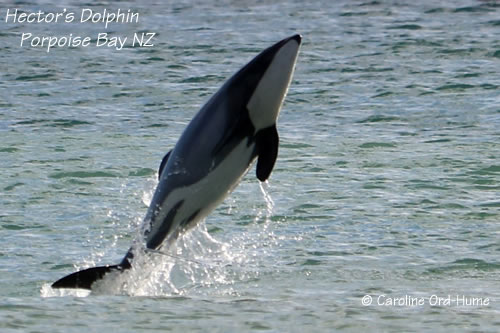
These are the smallest marine dolphins anywhere in the world and it is a privilege to be able to see them playing in the surf, sometimes close to shore, as they are very rare with only approximately seven thousand left.
Facts about Hector's Dolphins.....
Hector’s Dolphins Habitat
During summer and autumn they come close to shore to feed which makes them easy to see without having to get on a boat.
During winter they tend to go further out to sea but not far, usually within 8km of shore and remaining in the same area.
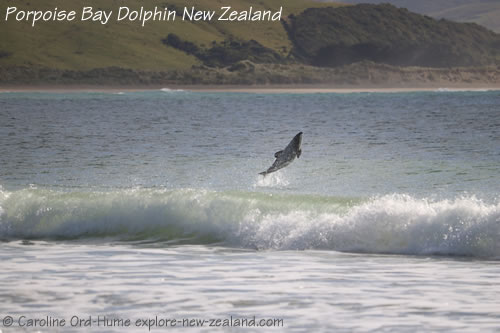
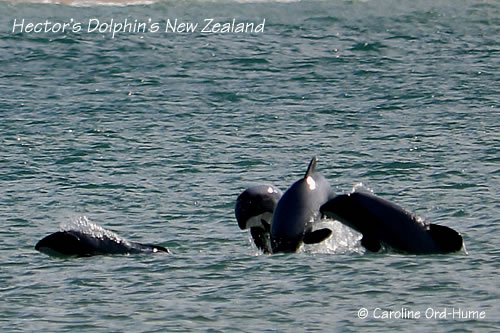
Lifespan of Hector’s Dolphin
The lifespan of Hector’s Dolphins is around twenty years and as the females will only produce a maximum of four to five calves in their life, it is important that the species receives as much protection as possible.
It wouldn’t take much to cause Hector’s Dolphins to become extinct with their biggest threat being human activity. One preventable threat in particular is the dolphins drowning in gillnets.
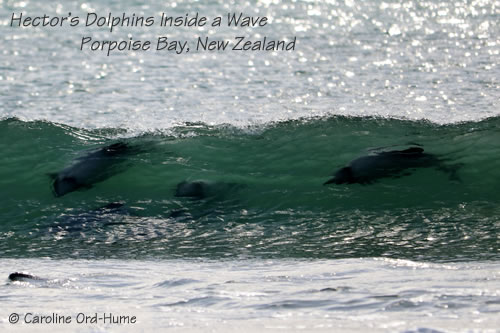
Names for Hector’s Dolphins
Hector’s Dolphin, Māui Dolphin
Names for Hector’s and Māui dolphins in Māori: papakanua, tutumairekurai, upokohue, tukuperu, aihe, tūpoupou, pōpoto, pahu, hopuhopu
Identifying Hector’s Dolphins
Hector’s Dolphins are easy to recognise by their round dorsal fin and distinctive grey colouring with black and white markings. Out of all the worlds dolphins they are also one of the smallest at a maximum of 1.5 metres long.
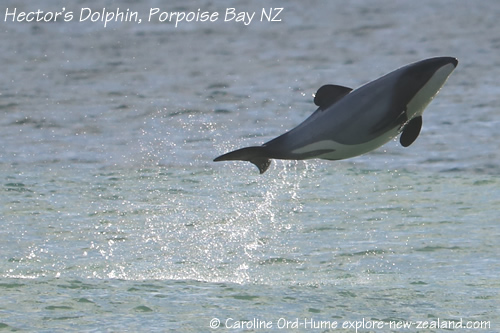
So if you see a small dolphin from the shore, with a round dorsal fin and black and white markings, it is likely to be a Hector’s Dolphin or the even rarer sub-species Māui Dolphin.
Hector’s Dolphin and Māui Dolphin look the same to an untrained eye, but they are in fact different both genetically and physically.
Hector's Dolphins Conservation
Rare Dolphins in New Zealand
There are two sub-species of these small dolphins, the South Island Hector’s Dolphin and the Māui Dolphin, the latter can be found off the North Islands west coast.
Although there are around 7000 Hector’s Dolphins, there are said to be only around 50 Māui dolphin over one year old left. Māui dolphins only exist in New Zealand waters and with such a small number remaining they are therefore on the edge of extinction.
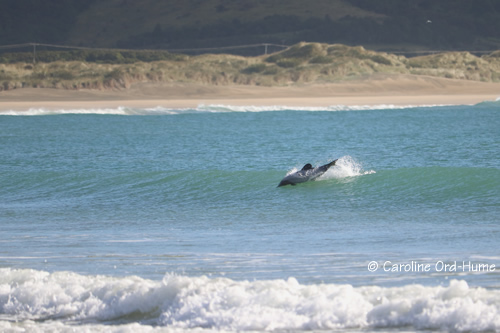
To play your part in helping these dolphins survive, do no feed them, do not approach them, and if they approach you do not touch their sensitive skin. When you enter water where the dolphins are please only enter from a minimum of 50 metres away so as not to disturb them.
The dolphins are inquisitive and will often approach swimmers and kayakers, sometimes coming very close. You still must not touch them and must keep still and not interfere with them in any way.
Approaching Hector’s Dolphins
Advice from the Department of Conservation...
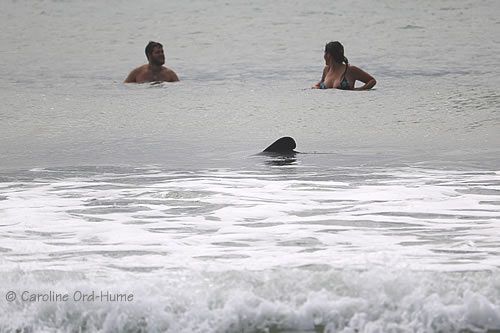
You should try to follow this guidance if you are in a boat, swimming, kayaking, surfing, or any other water activity anywhere where there are dolphins present.
Also be aware of other people trying to see the dolphins and cooperate with them to enable all to enjoy the experience without interfering with the dolphins or causing them to be at risk.
For example, should you be in the water with other swimmers and dolphins approach or swim near you, enjoy the experience and then slowly make way so that others can also enjoy it.
- Do not make loud noises to avoid startling the dolphins, above or below water
- Do not swim if calves are with the adult dolphins
- Do not attempt to touch or feed dolphins
Boats
Don't
- Do not make wake within 300m of dolphins
- Do not manoeuvre a boat in front of dolphins or between adult and calf
- Do not operate a boat within 300m if there are 3 other boats in the 300m area
Do
- Do operate your boat quietly and slowly within 300m of dolphins
Do approach slowly and carefully to the side and side of rear
Hector’s Dolphins Threats
Hector’s and Māui dolphins are marine mammals that surface regularly to breathe. Net fishing is one of the main threats to these dolphins as if they become tangled in a net and can’t surface to breathe they will drown just as a human would.
Nets
- Do not leave fishing nets unattended
- Do not set nets if dolphins are in the area
The Hector’s and Māui species of dolphins both live close to shore or in bays and harbours, right where humans are likely to be, with a concentration of boats that can also lead to injury of the dolphins. Young dolphin calves swim close to the surface and are slower than adult dolphins, therefore they are particularly vulnerable to being injured or killed by boat propellers.
Hector’s Dolphin Protection
1998 In Canterbury, the Banks Peninsula Marine Mammal Sanctuary was established to reduce Hector’s Dolphin deaths due to set-nets in the area.
1992 Marine Mammals Protection Regulations were put in place to control marine mammal tourism activities.
2003 Canterbury and in the west coast of the North Island introduced set-net controls.
Emergency Contacts
To report caught, injured, or killed dolphins contact:
- Department of Conservation 0800 362 468
- Ministry for Primary Industries 0800 008 333
To report nets being used in areas where netting is not permitted contact:
- Ministry for Primary Industries 0800 476 224
You may also be interested in New Zealand Wildlife and New Zealand Birds